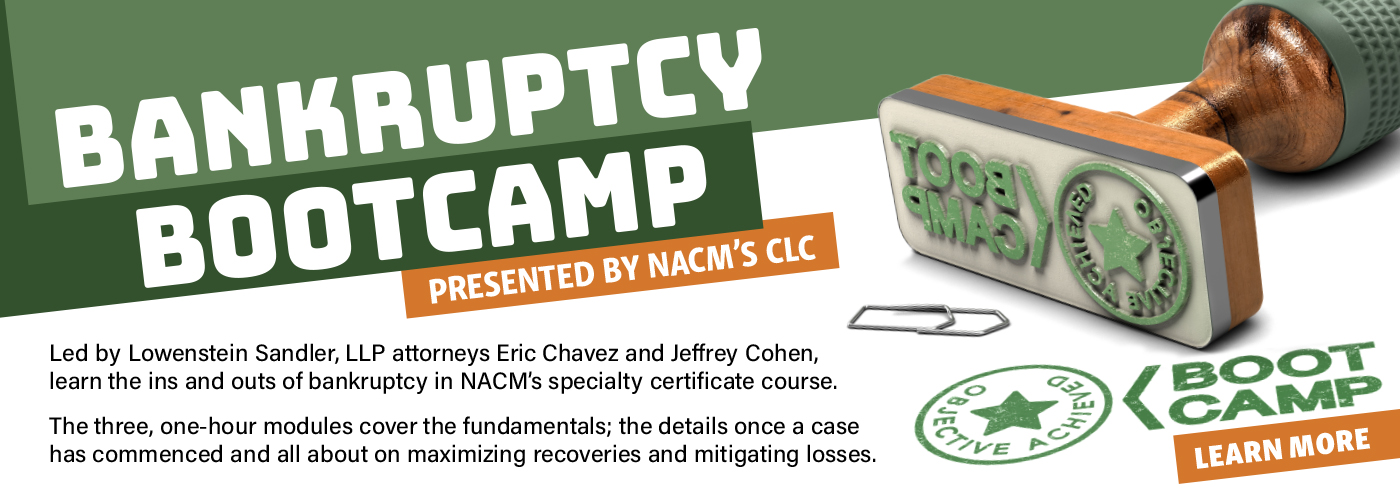eNews September 24
In the News
September 24, 2020
3 Tips for Conquering Self-Doubt at Work
—Ellen Taaffe, Clinical Assistant Professor at Kellogg School of Management
At some point or another in our careers, pretty much everyone experiences self-doubt. Ironically, feelings of self-doubt can be particularly acute for high achievers, who may hold a nagging suspicion that they aren’t ready for the positions into which they have been promoted. And while a dose of humility can be a helpful guard against hubris, too much self-doubt can be paralyzing.
Ellen Taaffe, a clinical assistant professor of leadership and director of women’s leadership programs at the Kellogg School, spent more than 25 years in brand marketing—at PepsiCo, Royal Caribbean, and Whirlpool—and is a member of three corporate boards. Over the course of this career, Taaffe has learned how best to manage her own self-doubt and advise others on how to do the same.
Here she shares three tips for pushing past your insecurities to act decisively:
Don’t Get Too Comfortable Playing the Observer
Self-doubt can manifest itself in many ways. You may dread an upcoming meeting, convinced you will not pull off your presentation. You may get the feeling your comment is landing with a thud as you give it. Or you may walk out of a meeting convinced that you should have come up with ten different answers than the one you gave.
Here’s a common manifestation that Taaffe sees every day: many high achievers have a perfectionist streak that can make them loath to act without 100 percent certainty, especially in new situations when they perceive they are more likely to misstep. So, they hold back, waiting rather than jumping in and learning.
Perhaps they do not feel qualified to weigh in on a topic. Or they overthink things as they search their mind for that perfect answer. And to be sure, there are times when over-preparation is a smart move. But many times, high achievers operate as if every interaction is high-stakes, when in reality, taking small risks could have much more upside.
Above all, it helps to avoid getting too comfortable in the role of observer, says Taaffe. A better approach, she says, is launching in as early as possible.
“Acting early does a couple of things,” Taaffe says. “It gets you past the ‘good answers being taken’ issue; and it can be a catalyst for others’ ideas that collectively get the team to a better place. The more you chime in, the more comfortable you will feel the next time.”
Taaffe has found it helpful to recognize that when you are in transition—settling into a new job or managing others for the first time—you may actually be in a better position to jump into discussions, because you have the greatest opportunity to bring something fresh to the conversation.
“We frequently think, ‘I don’t know this yet,’ instead of ‘I’m learning here,’ which frees you to ask your best questions and offer your best ideas,” Taaffe says. “It helps you and the group check assumptions and can lead to an updated way of looking at an opportunity.”
Taaffe has experienced this herself. A few years ago, she joined a corporate board. After the first year, one of her colleagues gave her some valuable feedback—that they wanted to hear more from her.
“At first, I was sort of mad,” she says. “I had told myself that I didn’t want to overplay my hand because I wasn’t a subject-matter expert in all aspects of the business, which is classic self-doubt. But it was fair feedback couched in a way that was positive. It reminded me that they had elected me for the expertise I do have, not because I knew everything. After the next meeting, that colleague commended me for coming out of my shell.”
“Staying silent is a self-protection mechanism,” she says, “but it’s not the best choice.”
Take a Cue from Those around You
For many people, self-doubt stems from a feeling that they are not qualified. But according to Taaffe, this feeling can be overcome, in part by feeding off the confidence and courage of those around you.
Look for examples in your own organization of individuals who have taken stretch assignments: the person who stepped in last minute to cover for a colleague, but who soon proved adept, for instance, or the person who was promoted to a new role based on the potential that they demonstrated in another, very different one. These assignments show how leaders apply their strengths to new challenges. And far from being rare, examples like this are prevalent in most organizations.
“You may think of these colleagues as fearless, but in reality, many of them feel the fear and act anyway,” Taaffe says.
It is also important to recognize how factors such as gender may shape perceptions of readiness for new responsibilities and stretch assignments.
“Men tend to go for a promotion or a position with a lot fewer of the skills that are listed on the job posting, whereas women look at those same skills and may think, ‘I am not ready yet,’” says Taaffe. “It’s easy to forget that all of us are hired or promoted due to our potential to learn the role versus already being able to do it at an A+ level. If we hold ourselves to a higher bar than others and as a result do not pursue bigger opportunities, we can get left behind, even in roles where we could have developed and excelled.”
Ditch Diminishing Language
On a day-to-day level, Taaffe says, you can project self-confidence by recognizing and minimizing how often you use qualifying language.
“I was recently on a call where a more junior person was sharing some good work that she had developed,” Taaffe says. “As she shared her recommendation, no one was responding. She started to speed up, audibly losing confidence before asking ‘Am I making any sense?’ I thought, Ugh. The pressure, when one is intimidated or doubting themselves, is real. It is easy to get rattled and diminish our contributions and confidence with how we communicate.”
Taaffe recommends avoiding rhetorical questions or opening qualifiers, because every “Does that make sense?” or “This may be a bad idea but…” signals doubt and indicates to listeners that the statement is less worthy of consideration.
Instead, confirm that your audience is following along using far more confident-sounding open-ended questions, such as “What are your thoughts?” or “What questions do you have?”
Taaffe also advises couching your idea in a brainstorming frame such as “What could we learn if we did…?” This has the added benefit of starting a dialogue that engages others and asks them to contribute.
Afterwards, check in with mentors and colleagues for advice about the ways your performance can continue to adjust and adapt.”
Assuming there’s a level of trust and comfort, you can seek feedback from others on these practices and it can be really helpful,” Taaffe says. “It can act as encouragement to monitor your own behavior and give you a confidence boost that acts as a kind of permission to jump right in and not hold back.”
Previously published in Kellogg Insight. Reprinted with permission of the Kellogg School of Management. The original article link can be found at 3 Tips for Conquering Self-Doubt at Work.
Ellen Taaffe is a Clinical Assistant Professor at the Kellogg School of Management, where she teaches Personal Leadership Insights and is the Director of Women’s Leadership Programming. She designs and delivers the Kellogg Women’s Leadership Seminar series, the signature program for female students across Kellogg’s Full-time, Evening/Weekend, and Executive MBA programs. She is a featured speaker and executive leadership coach in Kellogg’s Executive Education programs on Leadership and Governance and in MBA Leadership courses and programs.
Technological Stone Age a Reality After Cyberattack
—Andrew Michaels, editorial associate
Criminal hackers will do just about anything for a payday and that includes planning and executing cyberattacks on companies of any size. Yet, while companies can take precautionary measures to prepare for breaches, they will never truly know a cybercriminal’s tactics until the attack is underway. At EFCO Corp., Director of Credit and Risk Ty Knox, ICCE, said a recent cyberattack on his company came in the form of ransomware where hackers breached the company’s firewall, accessed some of its files and records, and demanded payment to prevent the information’s release. Despite the company’s quick response, the cyberattack severely disrupted day-to-day business for nearly the entire month of August.
According to Knox, the incident began on Aug. 5 when the IT department received a message from an employee who reported suspicious activity on their computer and said they had been infected with ransomware. The hacker made “an astronomical monetary demand” through Bitcoin to remedy this issue, Knox said, so the IT department researched the issue and determined a hacker organization got onto the company’s side of the firewall and had begun accessing files and records. At that moment, the IT department took down all of the company’s servers and shutdown its entire operation from a technical standpoint before any highly confidential information was stolen.
“What we determined early on was that we were dealing with a serious threat. It was a cyberattack, a ransomware attack, and it was real,” the credit professional said. “We got our executive team together and determined that we needed to hire a consultant to assist us with this issue. By Aug. 6, we realized that we were not going to be able to have our computers back any time soon. This was going to take quite a while to get our systems back up and running, so we put together a team to determine how we could operate our business with virtually no technology.”
EFCO Corp.’s executive team broke into groups, each assigned different tasks, including notifying the local and federal authorities, filing an insurance claim, hiring a consultant, and more. The consulting firm recommended the company not pay the ransom.
Two days after the initial attack, Knox said, all department heads met to discuss what technology was needed to accomplish daily tasks. From there, non-technology solutions to complete those tasks were developed. Manufacturing and warehouse crews had to share concrete construction project designs via thumb drives rather than the internet, while also keeping inventory records the old-fashioned way: pen and paper. Meanwhile, customers wanting copies of invoices and contracts had to wait because the company couldn’t provide any of that data as it was stored in its databases. Instead, EFCO Corp. had to let customers know it was experiencing a computer outage and would address their concerns as soon as possible.
The other question was, “How can EFCO Corp. get back up and running safely?” Knox said. EFCO is no different than most larger organizations, he noted, having redundancies and backups of all of its data. But they had to find versions of that data before the attack; therefore, the executive team created what they called a “sandbox environment,” with terminals that department heads could use to complete work. Using the sandbox environment, orders were entered and processed in an environment that wasn’t connected to the existing system.
The company operated via each department’s “sandbox operator” until the week of Aug. 24, Knox said, when the team felt confident that they could relaunch the system. The sandbox was turned into a production system, and on the 24th, the company went live with users beginning to use the system.
Countless weekday and weekend hours went into salvaging the company’s loss, Knox said, and additional policies and procedures are being established. Furthermore, EFCO Corp. intends to raise more awareness of cyberattacks to prevent future incidents.
“The consulting company said, ‘We can’t believe you’ve been in business for almost 100 years and it’s never happened.’ It’s kind of inevitable,” Knox said. “You can do everything you want, but if you’re big enough and you feel like a target for these people, they’ll take a shot. You can encrypt things and do a lot of behind-the-scene things to make your data harder to capture. But at the end of the day, it’s not going to stop hackers from attempting or at least giving you the impression they breached you and make these crazy demands.”
Wells Fargo Securities: Economic Growth Expected Through 2021
—Michael Miller, managing editor
The global economy is on the road to recovery, but the journey has only just begun. The destination is still far off in the distance, barely visible like a desert oasis through a mirage.
“In the fourth quarter and next year, we see positive growth based on the assumption the economy doesn’t completely lock down again like it did in March and April,” said Jay Bryson, Ph.D., Wells Fargo Securities chief economist in the Wells Fargo Securities Monthly Economic Outlook for September 2020 with Charlie Dougherty, Wells Fargo Securities economist.
“Growth [is expected] to slow beyond the current quarter, but momentum is holding up fairly well and suggests that businesses and consumers are adapting to the COVID environment,” states a Wells Fargo Securities release.
The overall growth rate in 2021 will be 4.5%, “which is a very strong number, but keep in mind we fell into a very deep hole in the first and second quarters this year,” said Bryson. It’s not expected the economy will be back to pre-pandemic peak numbers seen at the end of 2019 until the end of 2021, assuming the economy doesn’t go into a shutdown again.
“Consumer spending on goods bounced back quickly at grocery stores, cars dealerships, sporting goods, home furnishings,” noted Dougherty. “That level of spending is above the level we saw in February.” Other service sectors, such as eating at restaurants, air travel and others, still remain fairly weak. “Service spending is a bigger slice of the pie, so overall total consumer spending is off by about 5%,” said Dougherty.
While retail sales improved in August, according to Wells Fargo Securities, it was below expectations. The release also pointed out that it was the first data following the additional unemployment benefits provided by the U.S. government. One of the biggest takeaways from the analysis is that while sales may have increased in different industries, they are still well below pre-pandemic levels. For example, restaurants and bars saw a nearly 5% increase in August, but the sector is 16% below pre-pandemic numbers.
The University of Michigan’s consumer sentiment index increased in September to its highest level since March, noted a Wells Fargo Securities release. “Both current conditions and expectations improved. … Sentiment remains way-below its pre-virus level, but notably it hasn’t tested the lows visited in the aftermath of the 2008-crisis.”
An additional relief bill would bring upside to the Wells Fargo outlook going forward. The outpouring in consumer spending derived from unemployment insurance benefits and stimulus checks from the government, and another round would help the economy grow quicker. Another round of relief is not expected according to the September economic outlook.
The full, 8-minute Wells Fargo Securities Monthly Economic Outlook can be found under the Video Links box in NACM’s Knowledge Center.
Charges Against Marble Ridge Capital Founder Illustrate the Pitfalls That Await Members of Unsecured Creditors’ Committees Who Ignore Their Fiduciary Duties
—Matthias Kleinsasser, Of Counsel at Winstead PC
On September 3, 2020, the Securities & Exchange Commission charged Daniel Kamensky with abusing his fiduciary position as co-chair of the Neiman Marcus Group Unsecured Creditors’ Committee by pressuring a rival bidder to abandon its bid for securities so that Kamensky’s hedge fund could purchase them at a lower price. The U.S. Attorney’s Office for the Southern District of New York also brought charges against Kamensky for securities fraud, wire fraud, extortion, and obstruction of justice. The allegations—if proven—are a fascinating story in and of themselves.[1] But they also serve as an excellent illustration of the pitfalls awaiting Unsecured Creditors’ Committee members who ignore their fiduciary duties.
The Back Story: In a nutshell, Marble Ridge Capital, the hedge fund Kamensky founded and managed, successfully applied to be a member of the Unsecured Creditors’ Committee. The Committee negotiated a deal under which 140 million shares of securities would be obtained for unsecured creditors. So far so good. Things allegedly went awry when Marble Ridge began negotiating with the Committee to purchase securities from unsecured creditors who preferred cash. Kamensky allegedly learned that investment bank Jefferies intended to make a higher cash offer to unsecured creditors. To protect his firm’s offer, Kamensky informed a senior Jefferies trader that he would use his position as co-chair of the Committee to block the sale if the competing bid were not withdrawn. As a result, Jefferies decided not to make a bid for the securities and informed legal counsel for the Committee of Kamensky’s threat. Fearing he may have exposed himself to criminal liability, Kamensky purportedly made things even worse by calling the Jefferies trader and requesting he cover up the substance of their prior communications, acknowledging he “probably” breached his obligations as a fiduciary.
What are Unsecured Creditors’ Committees and Why Are They Necessary?
Section 1102 of the Bankruptcy Code provides for appointment of a committee of unsecured creditors by the United States Trustee, the Department of Justice’s watchdog that monitors bankruptcy proceedings. The logic behind appointing an unsecured creditors’ committee is that unsecured creditors frequently find themselves in a precarious position with little leverage—unlike secured creditors, which receive certain protections under the Bankruptcy Code—e.g., adequate protection of cash collateral used by the debtor. To level the playing field somewhat, the Bankruptcy Code provides for appointment of an unsecured creditors’ committee. Although the Bankruptcy Code states that a committee should generally be comprised of the seven largest claimants willing to serve, the U.S. Trustee has considerable discretion in appointing members and generally attempts to ensure that a committee’s membership represents the gamut of claims. For example, the U.S. Trustee might select a tort claimant to represent tort victims and a trade creditor to represent unpaid vendors on the committee. The Bankruptcy Code allows the committee to seek payment of its legal fees from the bankruptcy estate and requires a committee to, among other things, investigate the debtor and its financial dealings. Creditors’ committees can (and regularly do) obtain the right to pursue derivative claims (e.g., claims for breach of fiduciary duty or fraudulent transfer) that the debtor’s management may not wish to pursue, due to conflicts of interest.
In short, unsecured creditors’ committees exist to ensure that unsecured creditors get the best recovery possible under the circumstances. Because of this, creditors’ committee members owe fiduciary duties to all unsecured creditors and are required to place the interests of unsecured creditors as a whole above their individual interests. The allegations against Kamensky—if true—would mean that he placed the interests of his hedge fund in obtaining a good deal above the interests of all unsecured creditors in obtaining a higher price for their securities.
I’m Not a Bankruptcy Attorney. Why Does This Matter to Me or My Clients?
Serving on a creditors’ committee is one of the easiest ways for individuals or companies to become heavily involved in a bankruptcy proceeding. For example, a frustrated vendor with a large unpaid bill, or a fund holding a substantial amount of unsecured bond debt, may be interested in serving on a committee in hopes of influencing the case. The creditor may wish to improve the return for unsecured creditors, and, by extension, its own return since unsecured creditors generally receive the same pro rata recovery. That’s all good provided that the creditor stays focused on advancing the interests of all creditors, not just its own. What the Kamensky case illustrates is how quickly things can go downhill when a member forgets where its loyalties lie—to the point of significant civil and criminal charges. For this reason, a committee member’s representatives should consult with committee counsel prior to taking any action that could in any way be viewed as advancing the creditor’s own interests over those of the unsecured creditor body. Failure to carefully observe fiduciary duties may result in dire consequences.
[1] The SEC’s press release is available at https://www.sec.gov/news/press-release/2020-203. The U.S. Attorney for the Southern District of New York’s press release is available at https://www.justice.gov/usao-sdny/pr/new-york-hedge-fund-founder-arrested-and-charged-fraud-extortion-and-obstruction.
Matthias Kleinsasser is a seasoned litigator with experience in federal district court, bankruptcy court, and Texas state court. He is first and foremost a problem solver who takes a holistic approach to each matter in light of the client’s goals and concerns. He is equally comfortable negotiating a resolution to a dispute out of court or litigating a high stakes lawsuit. His experience in the fields of bankruptcy and creditors’ rights allows him to advise clients with respect to post-judgment remedies and debt restructuring options, enabling him to take a representation from the pre-suit stage to post-judgment proceedings with ease.
Please click here for the link to the original article.
-Date & Time Title Speakers
SEP 28 3pm ET
Elaine Nowak HighRadius Corporation Houston, TX SEP 29 11am ET
Krrishan Singhania K. Singhania & Co. Mumbai, India
Manoj Sonawala, Manoyog GRC Advisors Pvt. Ltd. Maharashtra, India SEP 30 3pm ET
Michael Lindsey, Esq. Jauregui & Lindsey Birmingham, AL OCT 1 10am ET
Cengiz Söylemezoglu Managing Partner UnitedKS Law Firm Istanbul, Turkey OCT 5 3pm ET
Kathryn “Katy” Baird, Esq. Andrews Myers PC Houston, TX OCT 7 3pm ET
Daniel Bertaska Senior Solution Architect Serrala Chicago, IL
Rob Jackson Senior Solution Architect Serrala Chicago, IL |






